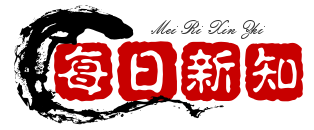The Art of Translation: How to Say "Object" in Different Languages
When it comes to the English word "object," many might think of a tangible item or an idea that can be visualized. However, the concept of an object is far more intricate and multifaceted than one might initially believe. In this article, we will explore the various ways to say "object" in different languages and delve into the cultural nuances and linguistic peculiarities that accompany each term.
The Universality of Objects
In English, the word "object" is derived from the Latin word "objectum," which means "something thrown in front." This etymology hints at the idea of an object being something that exists independently and can be perceived by the senses. Across languages, the concept of an object remains consistent, yet the words used to describe it vary greatly.
German: Das Objekt
In German, the word for object is "Das Objekt." German, known for its precision and structure, uses the definite article "das" before the noun, emphasizing the specificity of the object in question. This linguistic feature reflects the German culture's emphasis on clarity and detail.
French: L'objet
French, with its melodic and expressive nature, refers to an object as "l'objet." The use of the definite article "le" before the noun is similar to German but adds a layer of sophistication and elegance. The French language often imbues everyday objects with a sense of artistry and refinement, reflecting the country's rich cultural heritage.
Spanish: El objeto
Spanish, spoken widely across Latin America and Spain, calls an object "el objeto." The use of the definite article "el" mirrors the usage in both German and French, highlighting the universality of this grammatical structure in Romance and Germanic languages. Spanish, with its vibrant and dynamic nature, often infuses objects with emotion and life, making them integral parts of daily conversation and storytelling.
Japanese: 物体 (Kabutsu)
In Japanese, the word for object is "物体" (kabutsu). Unlike European languages, Japanese does not use articles before nouns, which emphasizes the inherent nature of the object itself rather than its specificity. This linguistic characteristic aligns with the Japanese philosophy of appreciating things for their intrinsic qualities rather than their external attributes.
Chinese: 物体 (Wùtǐ)
Chinese, with its ancient roots and complex character system, refers to an object as "物体" (wùtǐ). The characters for "物体" are composed of "物" (wù), meaning thing or matter, and "体" (tǐ), meaning body or form. This combination reflects the Chinese perspective of objects as entities with both physical form and material essence, embodying the harmony between nature and human creation.
Cultural Nuances and Linguistic Peculiarities
The way different languages refer to objects reveals much about the cultures they represent. For instance, the German emphasis on specificity and detail reflects the nation's engineering prowess and love for Ordnung (order). The French elegance in naming objects underscores the country's artistic flair and appreciation for beauty in all things. The Spanish vibrancy in describing objects highlights the warmth and passion of its people, while the Japanese focus on intrinsic qualities speaks to the Zen philosophy of simplicity and mindfulness. The Chinese characters for objects, with their deep historical and philosophical roots, reflect a civilization that values balance and harmony.
Conclusion
The word "object" transcends linguistic boundaries, yet its translation varies significantly across languages. Each term carries with it a unique cultural flavor and linguistic characteristic, enriching our understanding of what an object truly is. By exploring these differences, we gain a deeper appreciation for the diversity of human expression and the universality of the concept of an object. Whether it's "Das Objekt," "l'objet," "el objeto," "物体" (kabutsu), or "物体" (wùtǐ), the essence of an object remains a fundamental aspect of our shared human experience.





















